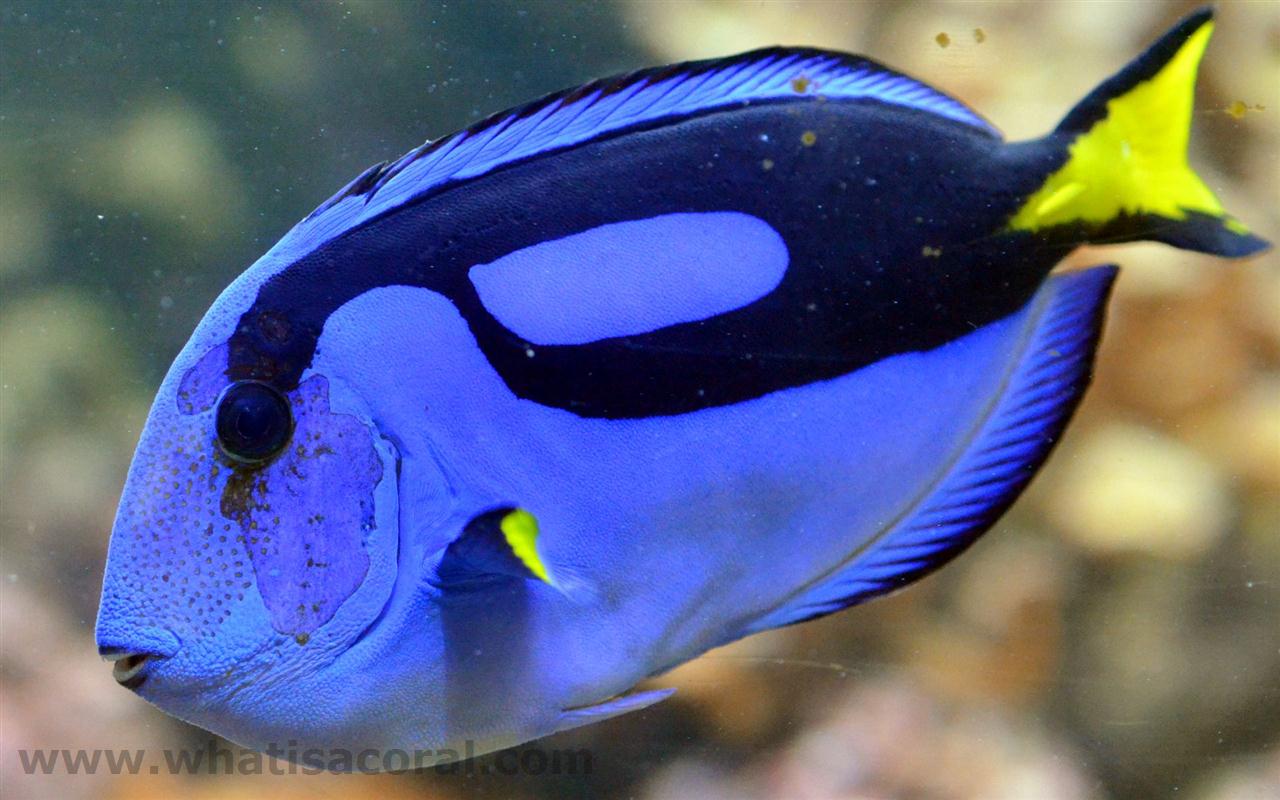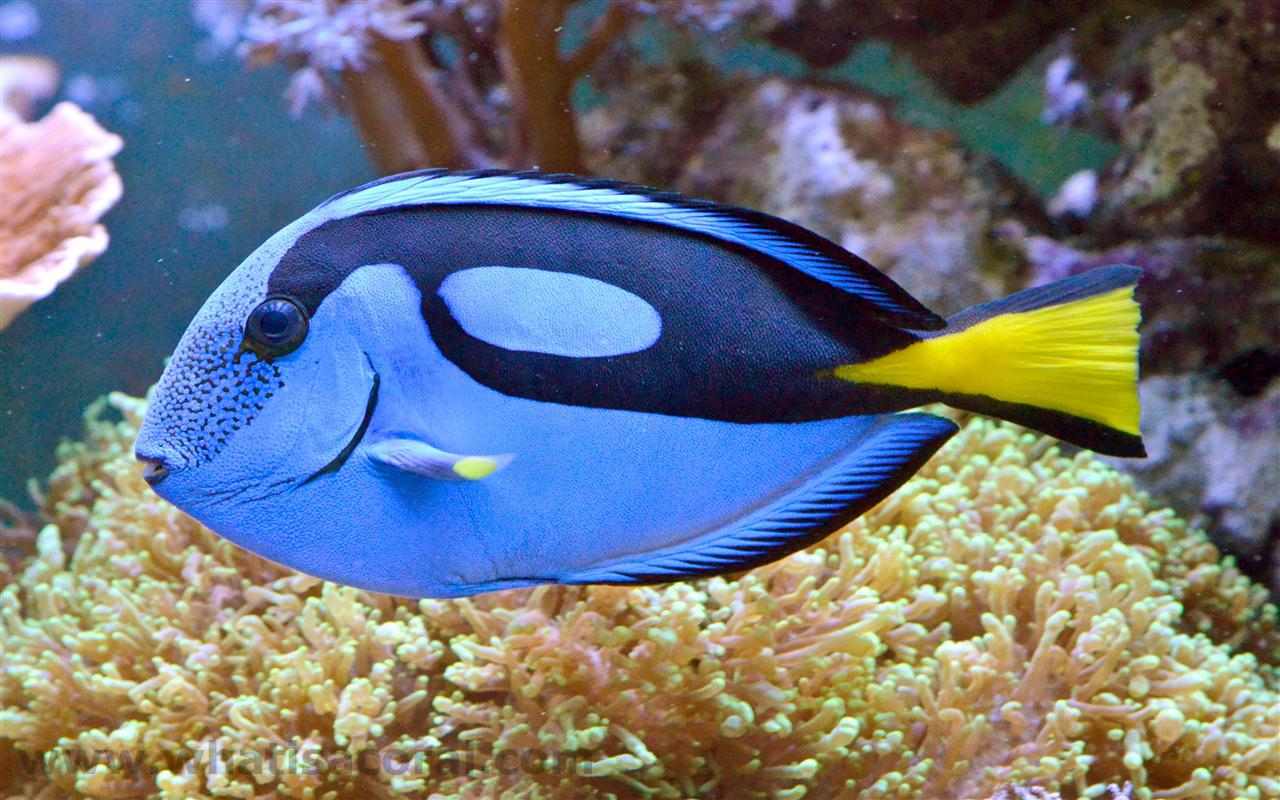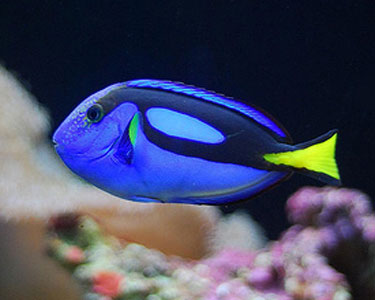
Paracanthurus hepatus
FAMILY
Acanthuridae
TAXONOMY
Paracanthurus hepatus Linnaeus, 1766, Ambon and Molucca islands,
Indonesia. Western Atlantic localities are in error.
OTHER COMMON NAMES
English: Blue tang, hippo; German: Paletten-Doktorfisch.
PHYSICAL CHARACTERISTICS
The body is compressed and somewhat disc-like; it elongates
with growth. The caudal fin is truncated in adults, but slightly
rounded in juveniles. There are nine spines and 19–20 soft rays
in the dorsal fin, three spines and 18–19 soft rays in the anal
fin, 16 soft rays in the pectoral fin, and one spine and three
soft rays in the pelvic fin. The caudal peduncle has a single
folding spine on each side. The body is a vivid bright blue, and
the belly is a paler shade of blue or, in Indian Ocean specimens,
yellowish blue. A black band curves backward from the
eye to the caudal peduncle. A second black band runs back
along the middle of the body from just behind the pectoral fin
and joins the upper band just before the caudal peduncle. The
caudal fin is mainly yellow, the yellow arising just ahead of the
caudal spine, with black margins that arise at the caudal peduncle.
Grows to 10.2 in (26 cm) in length.
DISTRIBUTION
Tropical and subtropical waters of the Indo-West Pacific, from
East Africa east to Micronesia, the Line Islands, and the Samoa
Islands, north to Kochi Prefecture in Japan, and south to northern
New South Wales, Australia. Observations of this species in
Hawaiian Islands are attributed to releases of aquarium stock.
HABITAT
Outer coral and rocky reefs and channels in clear water areas
with strong or moderate current. Juveniles and subadults prefer
to shelter in shrublike corals. Not common and patchy in
DISTRIBUTION
wherever it occurs. Depth range of 6.6–131 ft (2–40 m).
BEHAVIOR
Occurs in small aggregations that hover 3.3–6.6 ft (1–2 m)
above the substrate.
FEEDING ECOLOGY AND DIET
Omnivorous. Feeds on zooplankton and benthic algae.
REPRODUCTIVE BIOLOGY
REPRODUCTIVE BIOLOGY
is not well known. Courtship probably is
paired or paired within a spawning aggregation. Eggs and larvae
are pelagic, with a larval life in excess of 37 days.
CONSERVATION STATUS
Not listed by the IUCN. Localized populations are vulnerable
to overfishing of juveniles for the aquarium trade.
SIGNIFICANCE TO HUMANS
Collected for the aquarium trade, in which it is highly prized.
Juveniles and subadults that shelter in corals are relatively easy
to collect.
Other popular Animals
Photo Gallery of - Palette tang





 Animalia Life
Animalia Life